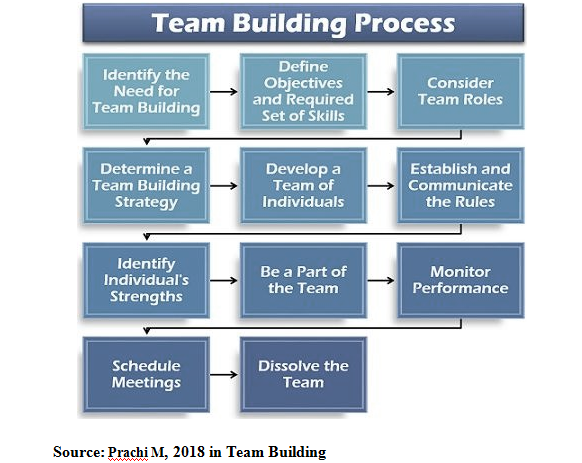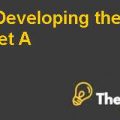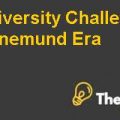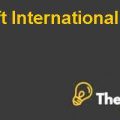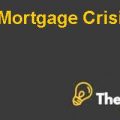Growing Managers: Moving from Team Member to Team Leader Case Solution
2.2.4 Gender Equality
In addition to this, the company is required to partner with the female workforce with the intent of making family and work-life more compatible. The companies intended to design the equality and diversity policies are concerned about many challenges such as; critical analysis of gender equality, creation of a nonjudgmental working environment, the inclusion of disabled team members, and strong cultural diversity through globalization.There should also be equal treatment for both genders. The flexibility of time, opportunities, appraisal, and extra perks should be equally given to them to increase the productivity of employees.
2.3 Team building
Team building is the management aspect to make the collaboration in employees to enhance the efficiency of work. It requires strong analytical skills and a diligent leader to make a strong team in the organization. However, there is a difference in demographics with a team. The main role of the manager is to analyze the strengths and weak points within a team and make a strong interpersonal relationship among them.
The manager in this case is required to make a well-planned team where every individual must be willing to work and create harmony with each other. The motto of the team must be uniformity which works for the organizational goal. The main focus should be on planning an efficient team where the scheduled meeting should be done along with the team members. Moreover, the manager must assign the designated roles to every individual member of the team.The rules and regulations should be completely defined to everyone and the decentralized communication process must be executed to overcome any communication gap. Everyone’s performance must be monitored and the bests should be given rewards to increase the motivation in team building.
2.3.1 Team building Process
The following team building process categorically defines the process of making structured team building.
- Source: Prachi M, 2018 in Team Building
3. Organizational Culture and Structure
3.1 Organizational culture
The organizational culture posits greater influence over the behavior of managers and leaders. The culture of effectiveness could help increase the readiness to change the employees and ethical leaders, who tend to serve as an offer and guide support, could also make difference by reducing uncertainty. The strategic leadership style of the manager and leaders is dependent on the tendencies of leadership which could be determined by the culture of an organization. Such differences tend to influence and tackle down all elements of the leading and working style of leader and manager such as communicating, directing and motivating.
The case of Greenhouse defines the organizational culture where everyone belongs from a different background and no harmony is shown among them.In addition to this, the nurturing leadership aspects could also raise the culture of the organization as well as the values of employees to a higher level of ethical behavior. Through demonstrating ethical leadership, the company attempts to promote a high level of integrity which in turn tends to stimulate the sense of trustworthiness as well as encouraging the subordinates to follow and accept the vision. Being an ethical manager and leader means holding, motivating, and inspiring employees within an organization to a certain standard of accountability and integrity. By doing so, the manager and leader would be able to powerfully boost the performance of employees by keeping the team’s morale high.
Not only this, but also the confidence as well as optimistic attitude and behavior from an accessible upper management of any organization, conveys the corporate stability and sense of well-being, thereby increasing the firm’s morale. On the other hand, the accessible pool of somber leaders and managers could encourage the atmosphere of distrust and fear & reduce the morale due to ranks.
3.2 Organizational Structure
Various theories define the organizational structure in the contemporary business world. Different theories represent the organizational structure where two types of organizations are defined.(Moşteanu, 2020)
3.2.1 The organization as a Formal structure
The natural system theory is explicit that the organization is a natural and physical structure, with the presence of employees’ involvement, who perform according to their tasks for the success of an organization. On the contrary, the formal structure is not just the basic rule of an organization but the structure which has the leadership and strategic management practice.
3.2.2 The organization as an open system
An open system implies that an organization is dependent on both internal as well as the external environments, where it has an internal link with the external environment. The resources are taken from the environment and are processed in the internal environment from where the role of strategic management and leadership begins.
3.2.3 Contingency Theory
This theory defines that an organization makes strategies to solve the issues in the workplace. The adoption of the best leadership styles and techniques and management principles are applied.
3.2.4 Agency Theory
This theory explains that how organizations make strategies to resolve agency issues and conflicts among the stakeholders and the management.
3.2.5 Learning Organizations
This theory explains that the organization adopts continuously learning process to increase its growth. Learning involves in the adoption of advancements and new dimensional aspects.
3.3 Challenges in Organizational structure
The Greenhouse has the estimated challenges, which are to be addressed properly and the management needs to make such strategies to overcome them:
-
- Keeping the employees motivated and connected with the work.
- Managing the issues in the organization and sustaining in the market.
- Building a learning organization where innovation and adoption must be continuously implemented.
- Designing a flexible environment where employees feel relaxed and satisfied.
- Motivation and satisfaction are the main challenges that organizations need to compete in................................
- Growing Managers Moving from Team Member to Team Leader Case Solution
- This is just a sample partial case solution. Please place the order on the website to order your own originally done case solution.

